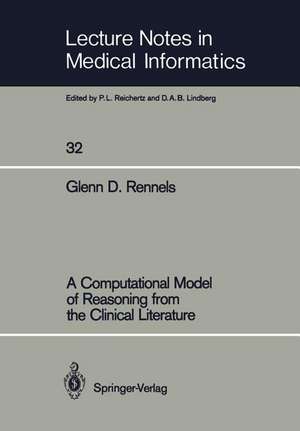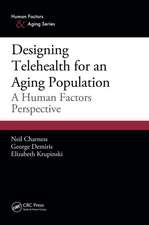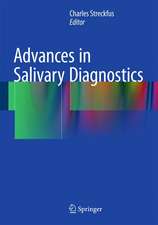A Computational Model of Reasoning from the Clinical Literature: Lecture Notes in Medical Informatics, cartea 32
Autor Glenn D. Rennelsen Limba Engleză Paperback – 3 iun 1987
Din seria Lecture Notes in Medical Informatics
- 5%
 Preț: 398.18 lei
Preț: 398.18 lei - 15%
 Preț: 631.53 lei
Preț: 631.53 lei - 5%
 Preț: 407.49 lei
Preț: 407.49 lei - 5%
 Preț: 705.11 lei
Preț: 705.11 lei - 15%
 Preț: 642.18 lei
Preț: 642.18 lei - 18%
 Preț: 944.82 lei
Preț: 944.82 lei - 5%
 Preț: 712.81 lei
Preț: 712.81 lei - 5%
 Preț: 412.42 lei
Preț: 412.42 lei - 15%
 Preț: 645.28 lei
Preț: 645.28 lei -
 Preț: 381.00 lei
Preț: 381.00 lei - 15%
 Preț: 640.88 lei
Preț: 640.88 lei - 5%
 Preț: 710.23 lei
Preț: 710.23 lei -
 Preț: 378.54 lei
Preț: 378.54 lei -
 Preț: 406.42 lei
Preț: 406.42 lei - 15%
 Preț: 640.24 lei
Preț: 640.24 lei - 5%
 Preț: 719.74 lei
Preț: 719.74 lei - 5%
 Preț: 750.10 lei
Preț: 750.10 lei - 5%
 Preț: 405.86 lei
Preț: 405.86 lei - 5%
 Preț: 712.81 lei
Preț: 712.81 lei - 5%
 Preț: 364.33 lei
Preț: 364.33 lei - 15%
 Preț: 639.59 lei
Preț: 639.59 lei - 15%
 Preț: 637.59 lei
Preț: 637.59 lei - 5%
 Preț: 713.33 lei
Preț: 713.33 lei - 15%
 Preț: 640.24 lei
Preț: 640.24 lei - 5%
 Preț: 363.60 lei
Preț: 363.60 lei - 5%
 Preț: 716.45 lei
Preț: 716.45 lei - 5%
 Preț: 367.07 lei
Preț: 367.07 lei - 5%
 Preț: 737.32 lei
Preț: 737.32 lei - 5%
 Preț: 706.41 lei
Preț: 706.41 lei - 5%
 Preț: 721.05 lei
Preț: 721.05 lei - 15%
 Preț: 632.70 lei
Preț: 632.70 lei - 5%
 Preț: 715.55 lei
Preț: 715.55 lei -
 Preț: 426.83 lei
Preț: 426.83 lei - 5%
 Preț: 711.52 lei
Preț: 711.52 lei - 15%
 Preț: 635.31 lei
Preț: 635.31 lei - 5%
 Preț: 721.05 lei
Preț: 721.05 lei -
 Preț: 444.13 lei
Preț: 444.13 lei - 5%
 Preț: 711.72 lei
Preț: 711.72 lei - 5%
 Preț: 374.41 lei
Preț: 374.41 lei - 5%
 Preț: 414.45 lei
Preț: 414.45 lei - 5%
 Preț: 366.56 lei
Preț: 366.56 lei - 15%
 Preț: 643.84 lei
Preț: 643.84 lei - 15%
 Preț: 642.03 lei
Preț: 642.03 lei
Preț: 715.35 lei
Preț vechi: 753.01 lei
-5% Nou
Puncte Express: 1073
Preț estimativ în valută:
136.89€ • 146.37$ • 114.13£
136.89€ • 146.37$ • 114.13£
Carte tipărită la comandă
Livrare economică 18 aprilie-02 mai
Preluare comenzi: 021 569.72.76
Specificații
ISBN-13: 9783540179498
ISBN-10: 3540179496
Pagini: 252
Ilustrații: XV, 230 p.
Dimensiuni: 170 x 244 x 13 mm
Greutate: 0.41 kg
Ediția:Softcover reprint of the original 1st ed. 1987
Editura: Springer Berlin, Heidelberg
Colecția Springer
Seria Lecture Notes in Medical Informatics
Locul publicării:Berlin, Heidelberg, Germany
ISBN-10: 3540179496
Pagini: 252
Ilustrații: XV, 230 p.
Dimensiuni: 170 x 244 x 13 mm
Greutate: 0.41 kg
Ediția:Softcover reprint of the original 1st ed. 1987
Editura: Springer Berlin, Heidelberg
Colecția Springer
Seria Lecture Notes in Medical Informatics
Locul publicării:Berlin, Heidelberg, Germany
Public țintă
ResearchCuprins
1. Introduction.- 1.1. Introduction to the Problem.- 1.2. Research Themes.- 1.3. The Roundsman System: Examples.- 1.4. Research Contributions.- 1.5. Guide to the Reader.- 2. Background.- 2.1. A Review of Artificial Intelligence in Medicine.- 2.2. Consultation Systems for Biostatistics.- 2.3. Computer Databases.- 2.4. Decision Analysis.- 2.5. Scope of the Biomedical Reports in Roundsman’s Library.- 2.6. Guides to Clinical Application of Biomedical Reports.- 2.7. Management of Primary Breast Cancer.- 3. Overview of the Research and the Roundsman System.- 3.1. Informal Protocol Analysis.- 3.2. The Development of Target Scripts.- 3.3. Selection of Publications to Include in Roundsman.- 3.4. Hardware and Software Support.- 3.5. An Overview of the Roundsman System.- 4. Modeling Distance from Study to Decision.- 4.1. Representing a Study’s Basic Statistical Results.- 4.2. A Taxonomy of Distance.- 4.3. Calibration of Distance.- 4.4. Distance Estimators.- 4.5. Work Related to Roundsman’s Distance Metric.- 4.6. Summary.- 5. Choice and Explanation.- 5.1. Introduction.- 5.2. Multiattribute Decision Making.- 5.3. The Importance of Modelling Both Choice and Explanation.- 5.4. Four Strategies for Choice and Explanation.- 5.5. Lexicographical Ordering.- 5.6. Satisficing.- 5.7. Dominance.- 5.8. Trade-Off.- 5.9. Comparison Strategies Under Uncertainty.- 5.10. Implementation in Roundsman.- 5.11. Summary.- 6. Interactions Between Studies.- 6.1. Updating Roundsman Over Time.- 6.2. Conflict Between Study Results.- 6.3. Summary and Future Directions.- 7. Text Generation.- 7.1. Introduction.- 7.2. Examples.- 7.3. Programming Language Primitives: Objects and Messages.- 7.4. Overview of the Implementation.- 7.5. Operational Description of the Objects.- 7.6. Discussion.- 8. ExtendedExamples and Evaluation.- 8.1. Example 1.- 8.2. Example 2.- 8.3. Example 3.- 8.4. Example 4.- 8.5. Example 5.- 8.6. Example 6.- 8.7. Example 7.- 8.8. Example 8.- 8.9. Evaluation.- 9. Conclusions.- 9.1. Summary.- 9.2. Limitations.- 9.3. Promising Areas for Extending the Research.- Appendix I. Internal Representation of the Studies in Roundsman’s Library.- Appendix II. Sample Distance Estimators.- References.










